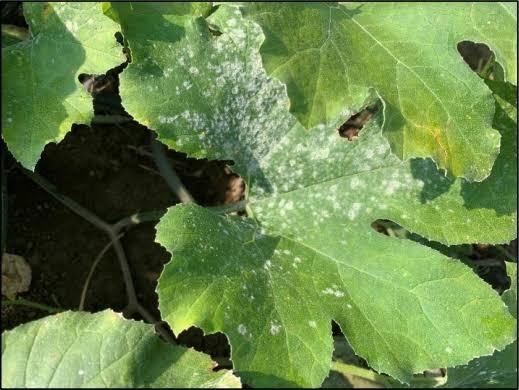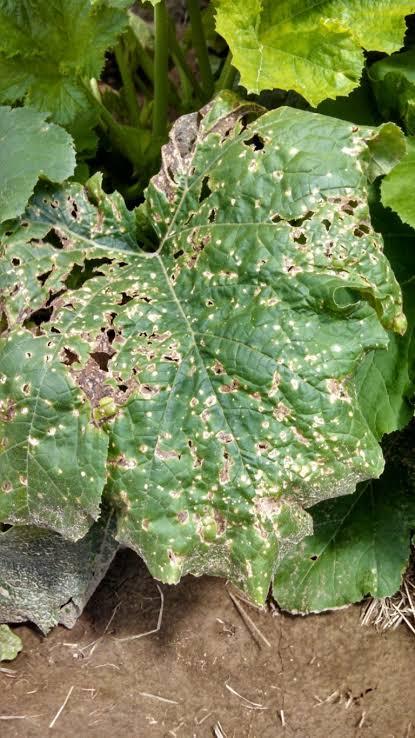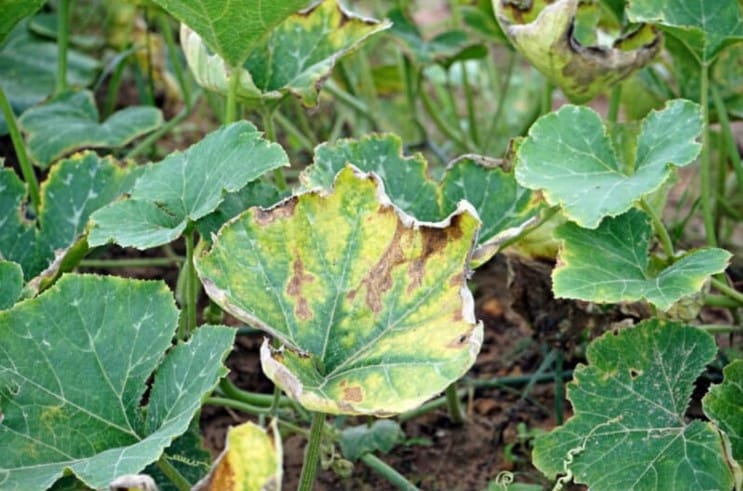Pumpkin Plant
Pumpkins are annuals, 18-72 inches tall, and frost-sensitive. They prefer well-drained, fertile soil in full sun. Keep the soil moist. Pumpkins are edible but not medicinal.
Habit
Annual
Height
1.0 to 2.0 m
Growth
Fast
Soil
Well-drained, Loamy
Shade
Full Sun
Moisture
Moist
Edible
Yes
Medicinal
Yes
Origin
North America
Climatic Condition
Tropical, Subtropical
Temperature (°)
15°C to 25°C
Humidity (%)
60% to 80%
Potting media
50% Loam, 40% Sand, 10% Compost
Fertilizers
Organic Fertilizer
Watering
Regular watering
Plant Weight
5 to 10 kg
Flowering Time
Fall to Winter
Soil Ph level
6.0 to 7.5
Water Ph level
6.0 to 7.0
Soil EC
0.6 to 1.0 mS/cm
Yield Per Plant
8 - 10 fruits/plant
NPK ratio
10:10:10
life Span
2 to 4 years
Health Benefits
High in Nutrients, Medicinal
Suggested Grow Media or Potting Mix ?
50% loam, 25% compost, 25% sand
Suggested Fertigation/Fertilizers
Fertilize every 6 weeks with a balanced fertilizer.
Common Diseases and Remedies
Downy Mildew , Powdery Mildew
Pale green Leaves , White Patches on leaves
Bordeaux mixture 1%@ 1liter of H2O, Neem oil
HEALTH BENEFITS
· Rich in beta-carotene, supporting eye health
· High in fiber, promoting digestion
· Boosts immunity with vitamins A and C
· Seeds are packed with magnesium and zinc
What Is A Pumpkin ?
Pumpkin plants are short-lived annual or perennial vines with broad leaves and branched vines. It produces large yellow or orange flowers and the fruits of certain types of pumpkins.

What Are The Different types of pumpkins?
1. Field Squash:-
Field Squash is a true pumpkin with a hard stem and belongs to the species Cucurbita pepo.
2.Green Pumpkin:-
Also called heirloom pumpkin. These pumpkins have thick green skin and a sweet, nutty flavor. They come in a variety of shapes and sizes.
3.Baby Boo Pumpkins:-
These small white pumpkins are a type of acorn squash and are often used in fall displays.
4.Cinderella Pumpkin:-
These pumpkins are an old French variety with vines over 3 meters long.
5.Jack Bee Little Pumpkin:-
A palm-sized edible mini pumpkin that turns orange when ripe.

How do you care for your pumpkin plant?
1.Location:-
At least 6 hours of direct, unfiltered sunlight each day.
2.Sunlight:-
Pumpkins need at least 6 hours of direct sunlight per day.
3.Soil:-
Pumpkins grow best in well-drained, sandy, organic, nutrient-rich soil with a pH of 6.0 to 6.8. Sandy soils with lots of organic matter are best because they warm quickly and drain well.
4.Hydration:-
Pumpkins require a steady supply of water to grow successfully. Generally, you should provide about 1 inch of water per week.

5.Nourshiment:-
Plants should be fed weekly with compost tea or diluted Panchagavya. After flowering, sprinkle wood ash around the plant every two weeks to provide potassium.
6.Issues:-
Alternaria leaf blight
Alternaria leaf spot
Cercospora leaf spot
Downy mildew
Fusarium crown
Foot rot
Fusarium solani
Gummy bear blight
Powdery mildew
What are the benefits of the pumpkin plant?
Good for the heart.
Acts as an antioxidant
Helps lower blood sugar levels
Protects against cancer
Protects the liver
Reduces the risk of rheumatoid arthritis
Protects against ulcers
Increases male fertility
Reduces the risk of breast cancer
Supports Bladder and Prostate Health
Supports Healthy Sleep
Improves Immunity

FAQ's About Growing Pumpkin Plants
1. How long does it take to grow a pumpkin?
Pumpkins typically ripen about 95 to 110 days after planting, but this varies by variety.
2. When do pumpkins ripen?
Pumpkins are ready to harvest when they are fully colored, the vines begin to die back, and the skin is firm and can be scratched with your fingernail.
3. How should I harvest pumpkins?
Harvest ripe pumpkins with stems and store them in a place where they won't freeze. Cut with a sharp knife, leaving at least 2 inches of woody stem.
4. How can I care for a pumpkin plant?
Pumpkins require a lot of water, so it's best to use a soaker hose or drip irrigation. Try not to get the leaves wet. Feed your pumpkin with plenty of nutrients with continuously released plant food. When the pumpkin begins to form, lift it off the ground to prevent it from rotting.
5. What are the causes of plant stress?
Plant stress can be caused by: Too little or too much watering Soil pH imbalance


